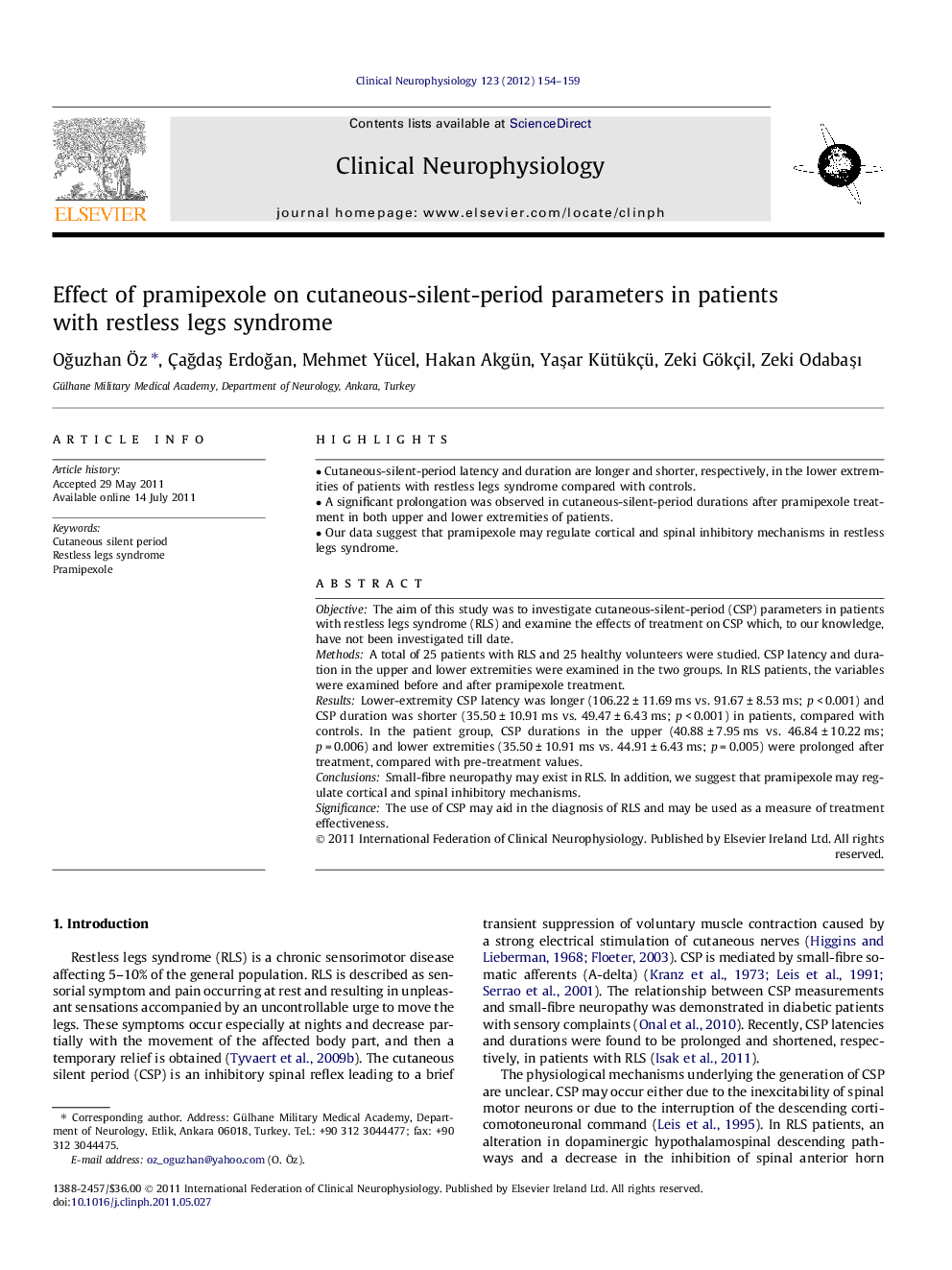| Article ID | Journal | Published Year | Pages | File Type |
|---|---|---|---|---|
| 3043843 | Clinical Neurophysiology | 2012 | 6 Pages |
ObjectiveThe aim of this study was to investigate cutaneous-silent-period (CSP) parameters in patients with restless legs syndrome (RLS) and examine the effects of treatment on CSP which, to our knowledge, have not been investigated till date.MethodsA total of 25 patients with RLS and 25 healthy volunteers were studied. CSP latency and duration in the upper and lower extremities were examined in the two groups. In RLS patients, the variables were examined before and after pramipexole treatment.ResultsLower-extremity CSP latency was longer (106.22 ± 11.69 ms vs. 91.67 ± 8.53 ms; p < 0.001) and CSP duration was shorter (35.50 ± 10.91 ms vs. 49.47 ± 6.43 ms; p < 0.001) in patients, compared with controls. In the patient group, CSP durations in the upper (40.88 ± 7.95 ms vs. 46.84 ± 10.22 ms; p = 0.006) and lower extremities (35.50 ± 10.91 ms vs. 44.91 ± 6.43 ms; p = 0.005) were prolonged after treatment, compared with pre-treatment values.ConclusionsSmall-fibre neuropathy may exist in RLS. In addition, we suggest that pramipexole may regulate cortical and spinal inhibitory mechanisms.SignificanceThe use of CSP may aid in the diagnosis of RLS and may be used as a measure of treatment effectiveness.
► Cutaneous-silent-period latency and duration are longer and shorter, respectively, in the lower extremities of patients with restless legs syndrome compared with controls. ► A significant prolongation was observed in cutaneous-silent-period durations after pramipexole treatment in both upper and lower extremities of patients. ► Our data suggest that pramipexole may regulate cortical and spinal inhibitory mechanisms in restless legs syndrome.
